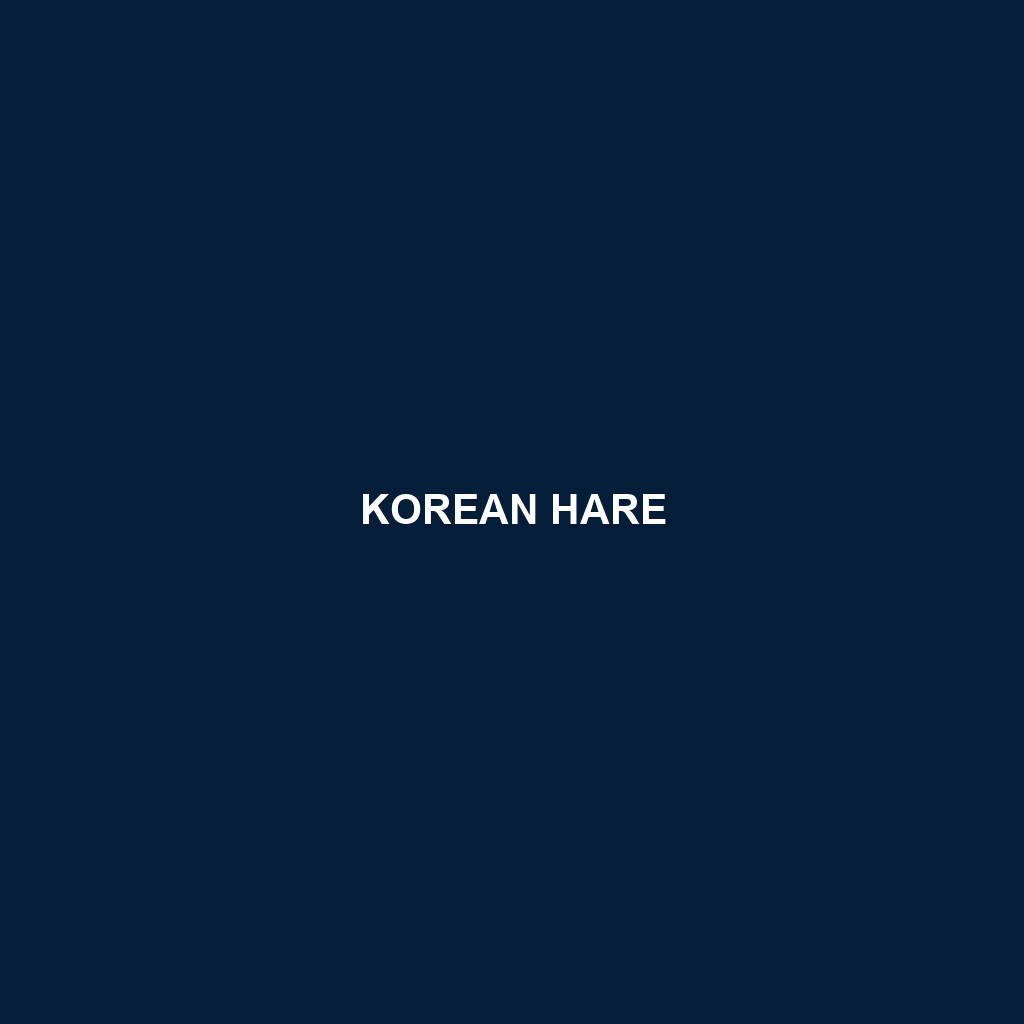Korean Hare Species Description
Common Name: Korean Hare
Scientific Name: Lepus coreanus
Habitat: The Korean Hare is primarily found in the temperate regions of the Korean Peninsula, including South Korea and North Korea. They inhabit a variety of environments ranging from grasslands and farmlands to shrubby areas and forest edges. The species thrives in environments that provide ample cover for foraging and protection from predators, making these habitats crucial for their survival.
Physical Characteristics: Korean Hares are medium-sized mammals, typically measuring between 38 to 50 cm in length and weighing around 1.5 to 3.5 kg. They have a distinctive appearance with long ears that can reach up to 10 cm in length, a short, fluffy tail, and strong hind legs designed for swift movement. The fur is usually a mix of brown and gray, providing excellent camouflage against the ground, with lighter underbellies that help in blending into their surroundings. Their large eyes offer a wide field of vision, a crucial adaptation for spotting predators.
Behavior: The Korean Hare is predominantly nocturnal, showcasing activity during twilight hours. They are known for their agility and speed, enabling them to escape threats effectively. Social in nature, they may be seen in pairs or small groups, particularly during grooming sessions and foraging. Their distinctive behavior includes a series of long hops interspersed with sudden changes in direction, which helps evade predators like foxes and birds of prey.
Diet: As herbivores, Korean Hares primarily feed on grasses, herbs, and leafy vegetation. They are also known to consume agricultural crops, such as carrots and other root vegetables, particularly in the spring and summer months when these resources are abundant. Korean Hares have a high-requirement for fibrous plants which contributes to their health and well-being.
Reproduction: The breeding season for the Korean Hare generally occurs from late February to early August. Females typically give birth to 2 to 4 offspring, known as leverets, after a gestation period of about 42 days. Leverets are born fully furred and with their eyes open, allowing them to begin foraging for food shortly after birth, a crucial adaptation for survival in the wild. Both parents may play a role in caretaking, especially in the early stages of the offspring’s life.
Conservation Status: The Korean Hare is currently listed as Least Concern by the IUCN Red List, though populations may be impacted by habitat destruction and hunting pressures. Maintaining stable populations is essential for their survival, along with sustainable land management practices in their habitats.
Interesting Facts: Korean Hares are known for their exceptional agility and can leap distances of up to 3 meters in one bound. Unlike many hare species, they adapt well to urban environments, often spotted in parks and gardens in search of food. They are also significant in Korean folklore, prominently featured in various cultural narratives.
Role in Ecosystem: Korean Hares play a vital role in their ecosystem as both herbivores and prey. As herbivores, they help control plant populations, promoting a balanced ecosystem. Their role as prey supports a range of predators, including foxes, domestic dogs, and birds of prey, thus contributing to the biodiversity and functioning of their habitats.
